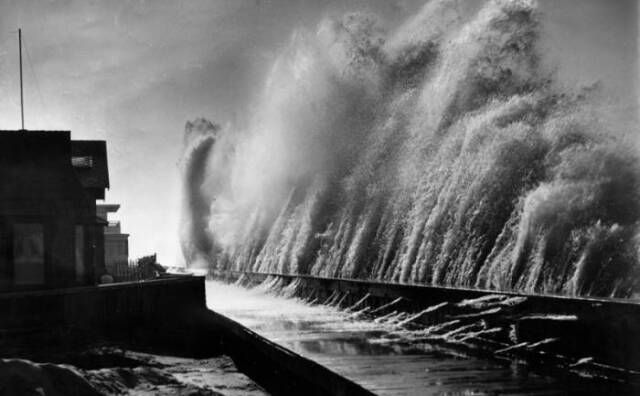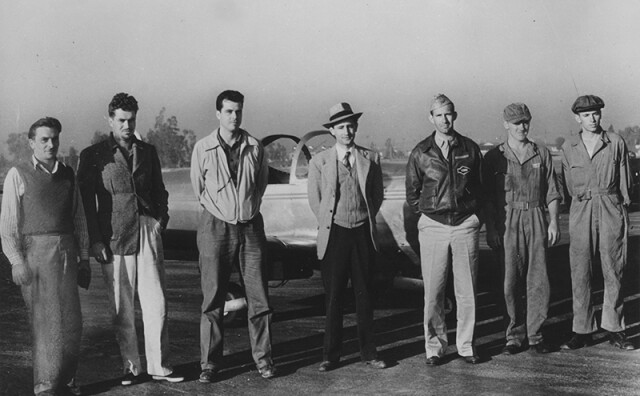Proposed LGBTQIA+ Cultural District In Long Beach Will Recognize City’s ‘Unwritten’ History

Long Beach is on its way to designate the Broadway Corridor as a LGBTQIA+ cultural district to honor the area’s longstanding historical contributions. Residents have until Nov. 19 to offer feedback in a survey on key components that are being considered in the district, which will stretch from Alamitos Avenue to Temple Avenue.
“Unwritten” LGBTQIA+ history
For decades, Long Beach has been a center for LGBTQ life in Southern California.
It's a place “where there's been political activity, where there's been triumphs and also sadness, where there's been a lot of history and a lot of happiness and a lot of life for queer people and kind of a gathering place around Southern California,” said Christopher Koontz, community development director for Long Beach.
-
Carson seeks $8M upgrade for huge visitor demand
-
Narrative of co-opting protests isn't new
-
Listen: Project Roomkey report, invasive beetles
But the city's LGBTQIA+ history has largely been “unwritten,” he said, with no formal recognition of the safe haven the city has provided the community over the years.
The cultural district is “a way to bring everyone together to tell stories throughout history and to think about where we go in the future as a city that celebrates diversity and celebrates community,” Koontz said.
That history, he said, goes as far back as 1914, when two men were arrested during raids at 606 Club and the 96 Club, both gay spaces in Long Beach. By the 1950s, the city was home to growing number of gay establishments, including Patch bar and societies like Daughters of Bilitis and Long Beach Satyrs Motorcycle Club, he said.
“We've moved forward so much as a society that we've sort of forgotten that at that point in history it was really something remarkable for gay and lesbian individuals to even feel safe all coming to the same space and meeting others,” Koontz said.
In the 1980s, the Broadway Corridor — the same area the city now seeks to recognize as a Cultural District — became a thriving hotspot for LGBTQIA+ owned businesses.
The process behind the proposed designation
In 2022, then Long Beach mayor and now Rep. Robert Garcia asked staff to create a plan for the LGBTQIA+ Cultural District. This June, officials released a report for public review and are soliciting feedback from residents.
The city hopes to capture the historical legacy with QR codes and virtual reality to make history come alive, Koontz said.
Input received so far is already helping to inform the city of the experiences of LGBTQIA+ people in Long Beach, he added. For example, officials are hearing how better lighting on the streets can make the community feel safer at night. The city is also seeking public input on art and murals that would “communicate a sense of pride,” he said.
Following the public input phase, officials will present a new plan to the city council in the spring of 2024 and begin bringing together some of the different elements to tie the cultural district together by October 2024, Koontz said.
Community welcomes the recognition
Joe Mendez, a realtor and past president of the Long Beach LGBTQ Chamber of Commerce, applauded the move.
Mendez moved to Orange County from Texas, and eventually made his way just a tiny bit further north.
“I moved to Long Beach because it was a much more diverse community. It had a well-known LGBTQ population," Mendez said.
The LGBTQIA+ community, he added, has long contributed to the local economy and his organization is looking to compile that data by ensuring that these businesses are classified as minority owned businesses.
“It's important that we let the world know that we are part of the economy especially with all the various (anti LGBTQIA+) initiatives and laws that are going across the country,” Mendez said. “We have to be visible and definitely do our part to advocate for our rights and our existence.”
-
Restored with care, the 120-year-old movie theater is now ready for its closeup.
-
Councilmember Traci Park, who introduced the motion, said if the council failed to act on Friday, the home could be lost as early as the afternoon.
-
Hurricane Hilary is poised to dump several inches of rain on L.A. this weekend. It could also go down in history as the first tropical storm to make landfall here since 1939.
-
Shop owners got 30-day notices to vacate this week but said the new owners reached out to extend that another 30 days. This comes after its weekly swap meet permanently shut down earlier this month.
-
A local history about the extraordinary lives of a generation of female daredevils.
-
LAist's new podcast LA Made: Blood Sweat & Rockets explores the history of Pasadena's Jet Propulsion Lab, co-founder Jack Parsons' interest in the occult and the creepy local lore of Devil's Gate Dam.






